Debt Relief Options
Home > Debt Relief Options
Falling into overwhelming debt can happen to anyone. An unexpected medical emergency, job loss, or other unforeseen life event can put you in a difficult financial situation before you even realize it. When you’re facing mounting debt, it can feel like there’s no way out. But there are solutions that can help you regain control of your finances. Understanding your debt relief options is the first step to developing a plan to become debt-free.
Here at Second Start Financial, we’re dedicated to empowering people to take control of their financial futures after falling into debt. Part of our commitment is providing transparent and honest information to help you make informed decisions about your options. We know exploring debt relief isn’t easy, but we’re here to walk with you every step of the way. There are a variety of debt relief solutions to consider based on your unique situation. While the right option for you depends on several factors, understanding the most common forms of debt relief is a good starting point.
What Debt Relief Options Are Available?
If you feel overwhelmed by high amounts of debt across multiple accounts, you may be wondering what debt relief options are out there. Many Americans are able to find the best debt solutions for their situations once they understand the options. The most common types of debt relief include:
Debt Settlement
Debt settlement involves working with a debt settlement company to negotiate directly with your creditors and settle debts for less than you originally owed. The company will work on your behalf to negotiate reduced payoff amounts, often settling debts for 30-50% less than the total balances. You’ll make monthly payments to the debt settlement company, which will be put into a secure account. Once there are sufficient funds to make settlement offers, the company will negotiate with creditors. Debt settlement allows you to consolidate multiple debts into one monthly payment at a reduced amount. However, this option will likely damage your credit score in the short term.
When considering debt settlement, be sure to choose a reputable company and watch out for high fees or false promises. Make sure you understand the process and timeline thoroughly before signing up. Debt settlement works best for unsecured debts like credit cards and medical bills. It may not be an option for secured obligations like auto loans or mortgages since defaulting could put those assets at risk. Overall, debt settlement provides the opportunity to resolve what you owe at a reduced cost but does require discipline to save in preparation for settlements.
Debt Consolidation
Debt consolidation combines multiple debts into a new loan with one monthly payment. One of the biggest benefits of debt consolidation loans is simplifying payments and often securing a lower interest rate. You can work with a credit counseling agency or various lenders, including banks, credit unions, and online lenders. If you own your home, a home equity loan or line of credit is another option for debt consolidation. Consolidating through a loan allows you to pay off debts under better terms while avoiding long-term credit damage. However, this route does require borrowing more money initially.
When exploring debt consolidation as an option, be sure to compare loan terms, fees, and interest rates from multiple providers. Work only with reputable lenders and be cautious of offers that seem too good to be true. A debt consolidation loan works best for consumers with good credit who can qualify for low rates. You also want to ensure you can afford the monthly payment on the consolidation loan based on your budget. While consolidating debt can make repayment easier, you need to be careful not to let debt continue accumulating on the new loan.
Bankruptcy
Declaring bankruptcy will eliminate many of your debts entirely or discharge portions that you can’t reasonably repay. However, bankruptcy damages your credit significantly and appears on your credit report for 7-10 years depending on the chapter you file. The most common consumer bankruptcy filings are Chapter 7 bankruptcy, which liquidates assets to pay creditors, and Chapter 13 bankruptcy, which restructures debt through a court-mandated payment plan. Bankruptcy is a last resort when your debt load is unsustainable through other options. Consulting with a bankruptcy attorney is advisable before pursuing this debt relief method.
The bankruptcy process provides a fresh start but involves time-consuming court proceedings and high legal fees. All assets and debts must be disclosed and are subject to review. Certain assets and debt types may not be dischargeable through bankruptcy. Carefully consider all alternatives before taking this step, as it will make securing future credit extremely difficult. However, bankruptcy can be the most effective option when you simply have no way to repay what you owe. Just be sure you understand the long-term consequences for your credit and finances.
Credit Counseling
Declaring bankruptcy will eliminate many of your debts entirely or discharge portions that you can’t reasonably repay. However, bankruptcy damages your credit significantly and appears on your credit report for 7-10 years depending on the chapter you file. The most common consumer bankruptcy filings are Chapter 7 bankruptcy, which liquidates assets to pay creditors, and Chapter 13 bankruptcy, which restructures debt through a court-mandated payment plan. Bankruptcy is a last resort when your debt load is unsustainable through other options. Consulting with a bankruptcy attorney is advisable before pursuing this debt relief method.
The bankruptcy process provides a fresh start but involves time-consuming court proceedings and high legal fees. All assets and debts must be disclosed and are subject to review. Certain assets and debt types may not be dischargeable through bankruptcy. Carefully consider all alternatives before taking this step, as it will make securing future credit extremely difficult. However, bankruptcy can be the most effective option when you simply have no way to repay what you owe. Just be sure you understand the long-term consequences for your credit and finances.
Analyzing Your Financial Situation
Before deciding on a debt relief strategy, it’s important to thoroughly analyze your overall financial situation. This involves reviewing your income, expenses, assets, liabilities, and credit standing. Ask yourself the following questions:
• What is my gross monthly income from all sources?
• What are my fixed living expenses like rent, utilities, insurance?
• How much have I historically spent on discretionary purchases?
• Do I have assets like real estate, vehicles, retirement accounts?
• What different debts do I have outstanding and what are the interest rates?
• Are my debts secured like a mortgage or unsecured like credit cards?
• What is my credit score and will it impact interest rates or options?
• Can I realistically set aside funds each month for debt repayment?
Creating a detailed budget and net worth statement provides clarity on how much can be allocated to debt obligations without financial stress. If your monthly surplus is minor, debt management counseling may be preferable over consolidation loans or settlement. Or if you have significant equity assets but poor cash flow, a debt-reducing home equity loan could work. Compiling a full financial picture helps narrow suitable strategies.
Exploring All Available Resources
Another key step is exploring resources that could supplement your income and provide funds pay down debt faster. Look into options like:
1. Part-time work or freelancing in your free time
2. Renting out extra rooms or unused property
3. Selling non-essential assets and valuables
4. Using reward program points for cash back
5. Cutting non-critical recurring expenses
6. Tax refunds and government assistance programs
7. Support from family members or friends if available
8. Employer benefits like transit subsidies or 401 k loans
Often even an extra few hundred dollars monthly from an additional income stream or reduced costs can make a difference in your debt repayment abilities. The more fluidity you have in your budget, the better positioned you are to tackle debt through the optimal path.

At Second Start Financial, we are dedicated to helping you regain control of your life. Our mission is to provide you with effective debt relief solutions that address your unique financial situation.
At Second Start Financial serves the following States only:
Alabama | Alaska | Arizona | Arkansas | California | Colorado | Florida | Georgia | Idaho | Illinois | Indiana | Iowa | Kentucky | Louisiana | Maryland | Massachusetts | Michigan | Mississippi | Missouri | Montana | Nebraska | Nevada | New Jersey | New Mexico | New York | Ohio | Oklahoma | Pennsylvania | South Dakota | Tennessee | Texas | Utah | Virginia | Wisconsin
Disclaimer:
Second Start Financial Inc is not a Broker or Lender. The role of Second Start Financial is to connect potential borrowers with lenders and financial service providers. Second Start Financial does not provide credit offers or solicit lending. The website and its operators solely offer a connection/matching service and are not agents, representatives, or brokers of any lender. They do not make credit decisions and do not charge potential borrowers for any loan or product.






